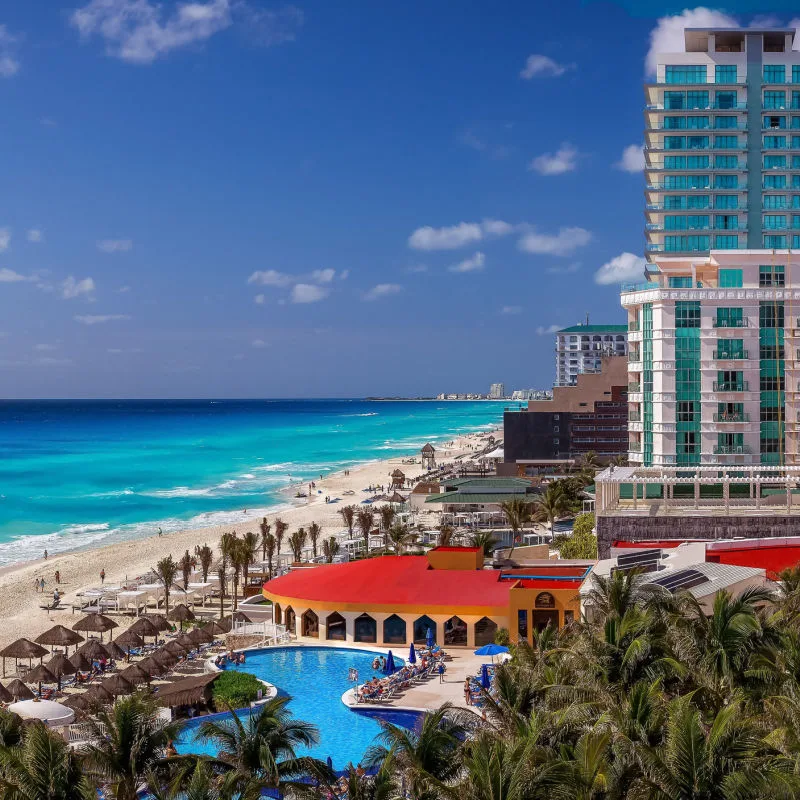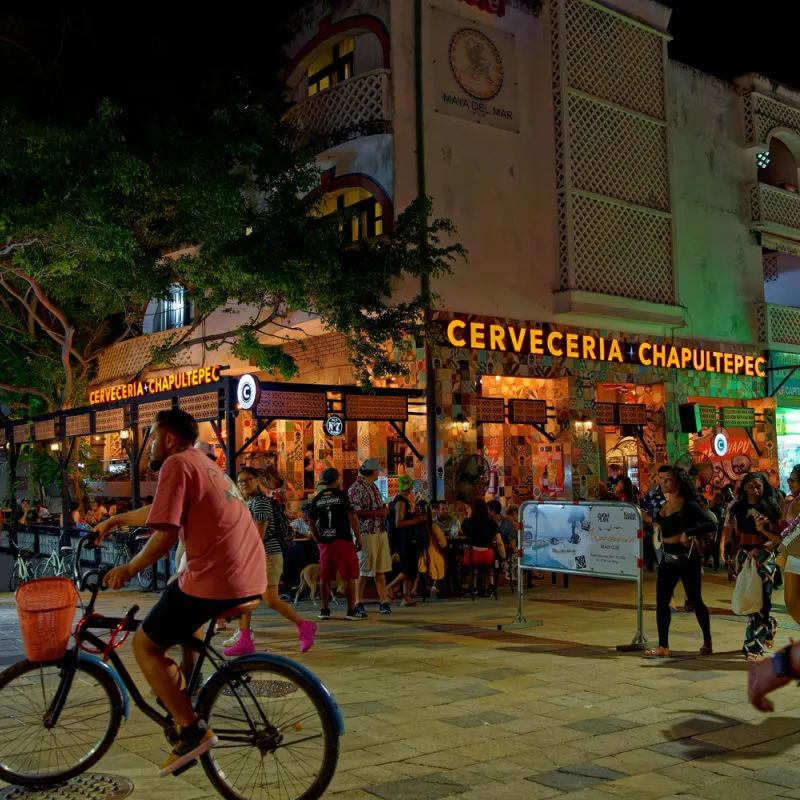Cancun and the Mexican Caribbean have become a global hotspot for digital nomads and remote workers after recent years have digitalized working culture.

This year, the number of long-term residency visas is expected to climb steeply as the government seeks to attract more foreigners.
Here’s why the Mexican Caribbean has become a magnet for digital nomads and remote workers.
Mexican Caribbean Among Most Attractive Destinations In Mexico For Digital Nomads
Travel isn’t the only category in which Cancun tops the list. New statistics show that the Mexican Caribean state of Quintana Roo is also the second most popular destination in Mexico for digital nomads.

In the past six years, more than 25,000 foreigners – mainly hailing from the U.S. and Canada – have moved to the Mexican Caribbean on a short-term or long-term basis. The number of applicants has skyrocketed in the past few years as global travel picks up.
According to a new report by Mexican immigration authorities, “the health crisis revolutionized the way people work, creating a new mobile labor market”, the analysis concludes.
For many remote workers, the Mexican Caribbean’s combination of sun-kissed beaches, excellent international connectivity, and warm tropical culture makes it an irresistible choice.
Top 5 Travel Insurance Plans For 2023 Starting At $10 Per Week
Easily Earn Points For Free Travel

Only the country’s capital Mexico City outperformed the Mexican Caribean in terms of long-term visas, owing to its larger population and the presence of large multinationals.
Hotels and resorts across Cancun have also responded to growing demand by implementing deals targeted toward digital nomads.
Many properties are offering cheaper rates for long-term stays which often include relaxing massages or special discounts for food and drink.
Cancun and Playa del Carmen have an abundance of properties that feature high-speed WiFi, office and co-working spaces, and most importantly, plenty of amenities to relax after a day of hard work.

Travelers are also increasingly booking long-term stays through online vacation rental platforms like Airbnb. According to recently-published statistics offered by the leading online travel firm, Tulum, Cancun, and Playa del Carmen are among the most sought-after hotshots for digital nomads in Mexico.
Meanwhile, the Mexican government and especially Quintana Roo’s governor Mara Lezama have shown a strong commitment to attracting more digital nomads.
@itsme_courtneyg A day in the life in Cancun, Mexico 📍👩🏼💻 if you are wanting to try out being a #digitalnomad – Mexico is a great place to start!! #mexicotravel #cancun #fulltimetravel #solotravel #dayinmylife #softwaredeveloper #lifeabroad ♬ FLOWERS X I WILL SURVIVE BY ALTÉGO – ALTÉGO
Quintana Roo officials have made it easier than ever to visit the Mexican Caribbean. From removing migratory red tape and implementing high-tech passport scanners at Cancun airport, the region is an attractive choice for foreigners.
Resort favorites like Cancun and Playa del Carmen have developed an excellent working culture that favors digital nomads and remote workers. From modern co-working spaces to affordable and high-speed internet, workers are guaranteed excellent productivity.
Cancun recently made the groundbreaking decision to implement free Wi-Fi across most of its popular public beaches, further highlighting the coastal town’s commitment to improving conditions for digital nomads.

The Mexican Caribbean strikes the right balance between work and play; the region is home to some of the world’s top nightclubs, and Cancun’s nightlife scene is teeming with excellent bars and restaurants.
Digital nomads can also enjoy endless relaxation opportunities across hundreds of beaches. And as if that weren’t enough, ancient Mayan temples and ruins are never too far in the Mexcian Caribbean.
Despite concern over safety, the Mexican Caribbean continues to welcome a record number of travelers. Visitor numbers are expected to continue rising this year as Cancun retains its position as one of the world’s leading tourism destinations.

When it comes to long-term residency, most foreigners opt for housing in central locations near touristy areas, which offer better safety and security.
Plan Your Next Cancun Vacation:
Traveler Alert: Don’t Forget Travel Insurance For Your Next Trip!
Choose From Thousands of Cancun and Riviera Maya Hotels, Resorts and Hostels with Free Cancellation On Most Properties
↓ Join the community ↓
The Cancun Sun Community FB group has all the latest travel news, conversations and tourism Q&A’s for the Mexican Caribbean

Subscribe to our Latest Posts
Enter your email address to subscribe to The Cancun Sun’s latest breaking news affecting travelers, straight to your inbox.

Peter Ahern
Tuesday 18th of April 2023
Many of these digital nomads do not pay Mexican taxes like the locals do . Also thanks to their presence property prices and rental prices in this part of Mexico have skyrocketed..Now many many born and bred humble Mexicans simply cannot afford the high prices of accommodation in their own country.Digital nomads are actually making a zero contribution to the well-being and prosperity of Mexicans because the minimum wage in this part of Mexico is still very very low..Many Mexicans work 6 days a week for a poor salary.The digital nomads are now taking over and inhabiting all the nices and most pleasant beach-side areas, while the poorer Mexicans are now forced to live in less pleasant, dangerous parts of Playa Del Carmen which are situated many many miles from the beautiful beaches...They can't afford to live in pleasant places in their own city now because these foreigners have caused accommodation prices to become ridiculously high. Digital nomads are really not a good thing for Playa Del Carmen in the long term. They have just made prices much higher, and they are even complicit in the presence of organised crime in Playa Del Carmen. Many of these foreigners buy drug like cocaine and marujuianha from drug dealer who work for the criminal cartels...